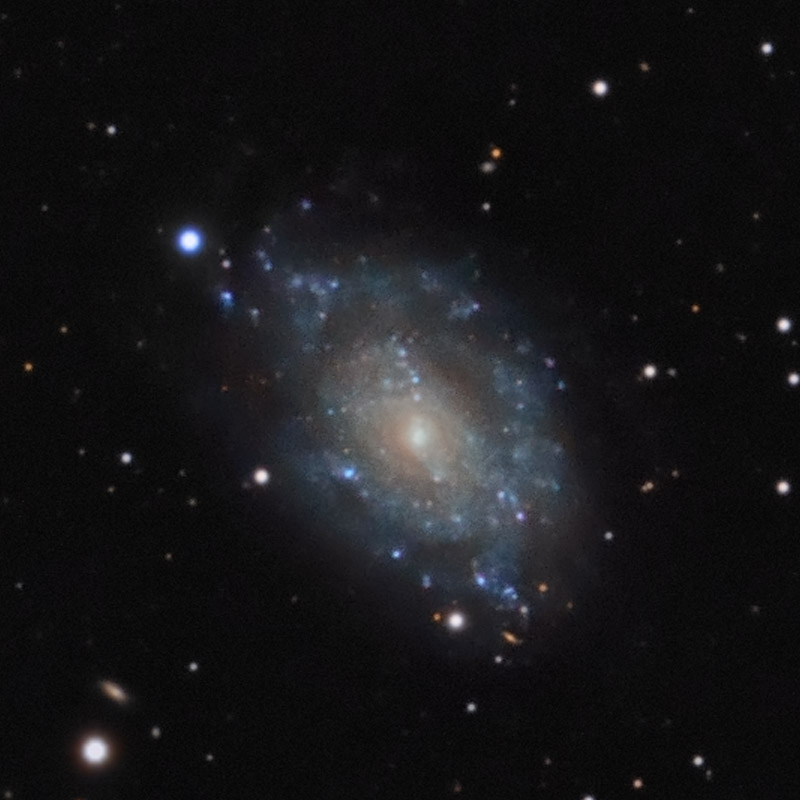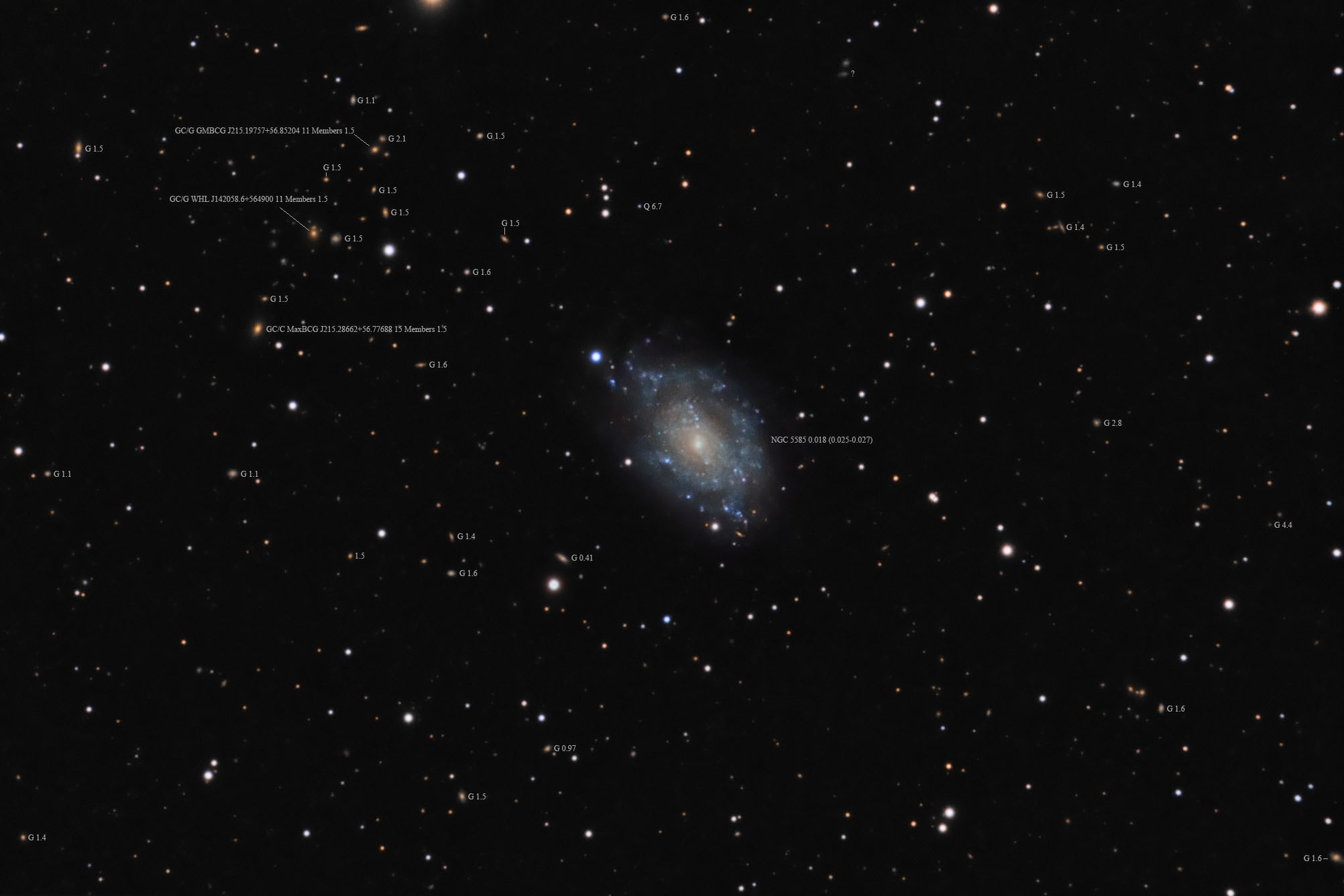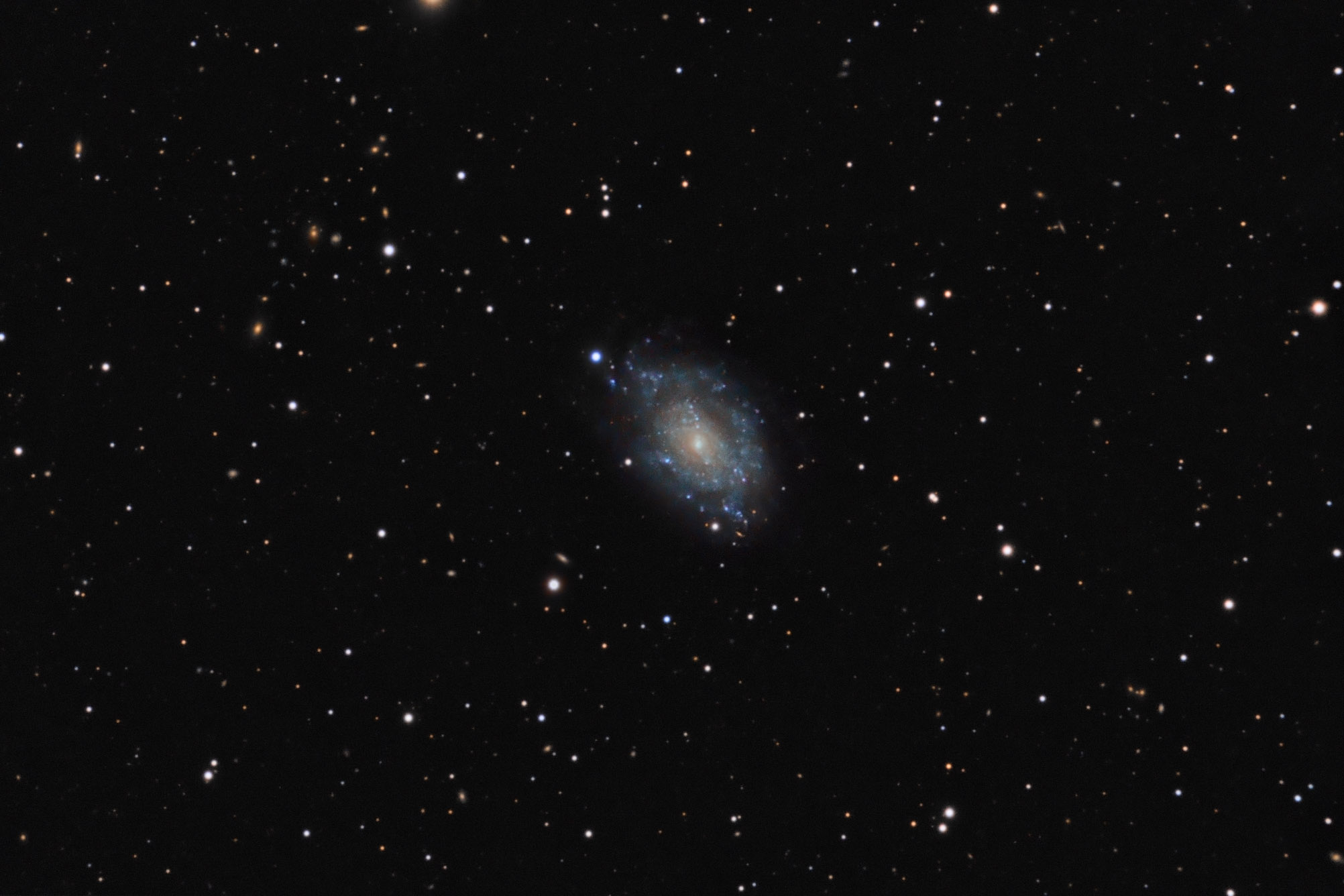| Description | Images |
Object name: NGC5585Designation(s): NGC5585, NGC 5585 is one of four dwarf satellite galaxies of M101. Therefore it is about the same distance as M101 which is usually state to be 25 to 27 million light-years away though the redshift for NGC 5585 is about 18 million light-years. NGC 5585 is the largest of the 4 by quite a margin. Also, it is the furthest from M101 at 3.33 degrees. At 25 million light-years it would be 36 thousand light-years across which is about the same size as the large Magellanic cloud. One note, from 1985. at NED says: "Knotty HII regions are distributed over the disk where the arm structure is not clear." Yet another older reference, 1964, says: "Bright middle. No definite nucleus. Weak irregular arms well resolved up to the central region. Low surface brightness." Could these very different descriptions be due to the difference between film and early CCD imaging? NGC 5585 is classed by NED as SAB(s)d with HII. The regions are said to be 2" in size or smaller. That is below my resolution this night. This would be interesting to revisit with an H alpha filter to bring out these many regions. It was discovered by William Herschel on April 17, 1789. It is in the second H400 program. Related Designation(s):11HUGS 372, 2MASX J14194820+5643445, 2MASXi J1419481+564345, CGCG 1418.2+5657, CGCG 295-045, HDCE 0853 NED003, IRAS 14182+5657, IRAS F14182+5657, KIG 0624, KUG 1418+569, LDCE 0842 NED012, LGG 371:[G93] 003, MCG +10-20-094, NGC 5585, NGC5585, NSA 045251, PGC 051210, SDSS J141948.25+564342.2, UGC 09179, UZC J141947.9+564346, [M98j] 170 NED80, [SPB93] 248, |


